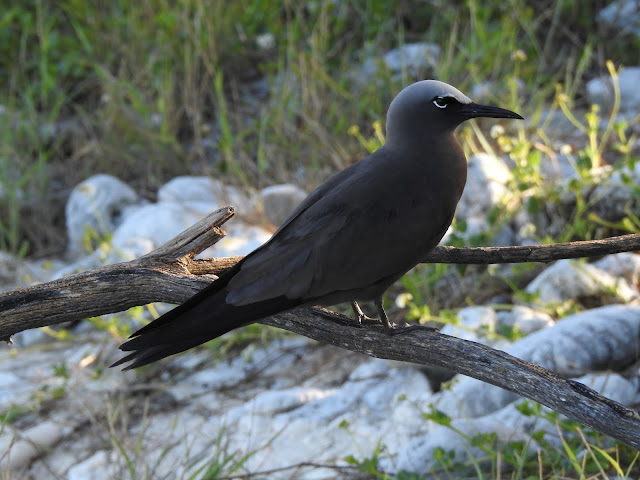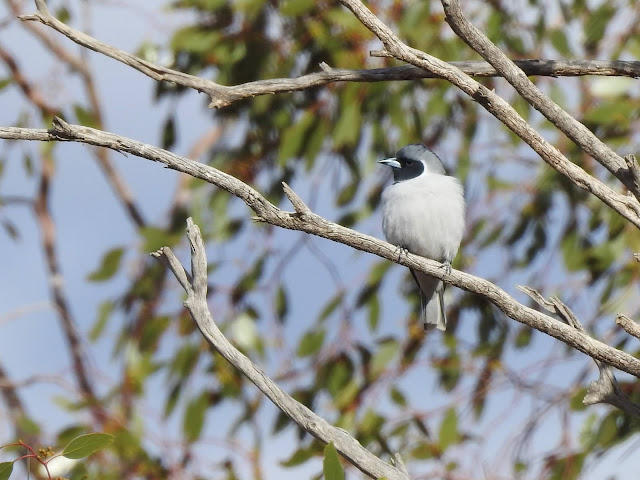Black Noddy
The Black Noddy is a common, conspicuous, gregarious dark
tern which is found around our globe in tropical waters.
Why Noddy and not tern? Well, it certainly immediately looks
different from every other tern, being dark with a white cap rather than the
converse. So that explains why the reluctance to call it and its other congeners
[Brown or Common and Lesser] terns. The term noddy has a couple of theories.
The first refers to the courtship between the male and female which does
involve nodding. The second, a term given to the birds by unforgiving and
hungry sailors in years past who called them noddies, as synonymous with
simpletons, for their naivety that allowed them to be harvested from their
nests by hand. The genus name Anous, which means
"unmindful" in Greek, further reflect this perception of the birds
being both simple and naïve.
The Black Noddy is, in a behaviour that is typically un-tern, a tree nester. Not only does it place a nest in trees it actually makes a substantial nest – again unlike every other marine tern. Keeping the differences going, it regurgitates food to its young, behaviour more typical of gulls than terns.
Our Bird of the Week has a distribution throughout the Great Barrier Reef and onwards throughout the Pacific [being found widely on the Hawaiian islands for example] and then throughout the Atlantic’s Caribbean Sea. Nesting on treed atolls the birds are generally found close to their nesting sites and no migration nor long distance movement.
On Lady Elliot Island in our southern Barrier Reef, where I
recently visited, the Black Noddies began breeding recently in 1985. The reason
for their initial absence also explains their return. Lady Elliot Island (LEI) was
clearly a wonderful seabird breeding island as attested by the huge reserve of
guano. From the commencement of guano mining, demanded by the rapid rise in
industrial agriculture, in the 1860s until the 1970s, LEI remained almost
devoid of all vegetation and had minimal birds nesting on it. Since a
re-vegetation program commenced in 1969, bird numbers have dramatically
increased. In 2020 the revegetation project continues, in addition to the pesticide
weed control, and with them the growing number of trees and, with them, the
tree nesting Noddies!
 |
| Pisonia tree decorated with Noddy nests |
The Pisonia tree (Pisonia grandis), a common species found on coral cays, actually benefits by being crowded with Noddies’ nests. For starters it gains their droppings as fertiliser. Indeed the trees are ornithocoprophiles, plants that require bird droppings to fuel their growth. Second, Pisonia seeds are covered in extremely sticky resin, and birds that brush against them often end up carrying the seeds between islands. Sadly, many birds starve and die cruel deaths when their wings become burdened by an excess of seeds; their bodies ending up too as fertilizer for the nutrient hungry trees.
 |
| Bridled Tern with the beginning of a seed problem... |
On the Queensland coast the only other similar / confuser species is the Brown or Common Noddy. It is larger, browner with a less pronounce pale cap. It is, by way of contrast, a ground nester.
 |
| Brown Noddy |













